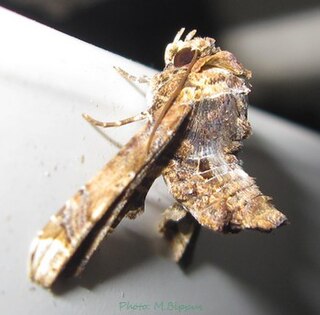
Heliothis is a genus of moths in the family Noctuidae. It was first described by Ferdinand Ochsenheimer in 1816. Some of the species have larvae which are agricultural pests on crop species such as tobacco, cotton, soybean and pigeon pea. Some species originally in this genus have been moved to other genera, see Chloridea and Helicoverpa.

Aemilia is a genus of tiger moths in the family Erebidae described by William Forsell Kirby in 1892. It was initially named Ameles, but this name properly refers to a praying mantis genus.

Amata is a genus of tiger moths in the family Erebidae. The genus was erected by Johan Christian Fabricius in 1807.

Asura is a genus of moths in the subfamily Arctiinae erected by Francis Walker in 1854.
Brycea is a genus of moths in the subfamily Arctiinae.
Calonotos is a genus of moths in the subfamily Arctiinae. The genus was erected by Jacob Hübner in 1819.

Cisthene is a genus of lichen moths in the family Erebidae. The genus was erected by Francis Walker in 1854.

Estigmene is a genus of tiger moths in the family Erebidae erected by Jacob Hübner in 1820. The species in the genus are native to North and Central America.

Eucereon is a genus of tiger moths in the family Erebidae. The genus was erected by Jacob Hübner in 1819.

Pseudosphex is a genus of tiger moths in the family Erebidae. The genus was erected by Jacob Hübner in 1818. These moths are mimics of a variety of Hymenoptera. The prefix pseudo means "false", and Sphex is a genus of wasps.
Saurita is a genus of moths in the subfamily Arctiinae. The genus was erected by Gottlieb August Wilhelm Herrich-Schäffer in 1855.
Sphecosoma is a genus of moths in the subfamily Arctiinae. The genus was erected by Arthur Gardiner Butler in 1876.

Trichromia is a genus of moths in the family Erebidae erected by Jacob Hübner in 1819. The members of this genus are largely indigenous to South America.

Udea is a genus of snout moths in the subfamily Spilomelinae of the family Crambidae. The genus was erected by Achille Guenée in 1845. The currently known 214 species are present on all continents except Antarctica. About 41 species are native to Hawaii.

Scoparia is a grass moth genus of subfamily Scopariinae. Some authors have assigned the synonymous taxon Sineudonia to the snout moth family (Pyralidae), where all grass moths were once also included, but this seems to be in error.

Acontia is a genus of moths of the family Noctuidae. The genus was named by Ferdinand Ochsenheimer in 1816. Eusceptis, Pseudalypia and Spragueia are sometimes included in the present genus, but here they are tentatively treated as different pending further research. Many species of Tarache were also once placed here.

Catephia is a genus of moths of the family Erebidae. Most species of this genus are found in Africa.

Eutelia is a genus of moths of the family Euteliidae erected by Jacob Hübner in 1823.

Victoria is a genus of moths in the family Geometridae described by Warren in 1897. The species of this genus are found in Africa.

Cryptoblabes is a genus of small moths belonging to the snout moth family (Pyralidae). They are the type genus of the Cryptoblabini tribe of the huge snout moth subfamily Phycitinae. At least one representative of this genus nowadays occurs in many parts of the world, though this is the result of accidental introductions by humans; most species of Cryptoblabes are fairly restricted in range.














